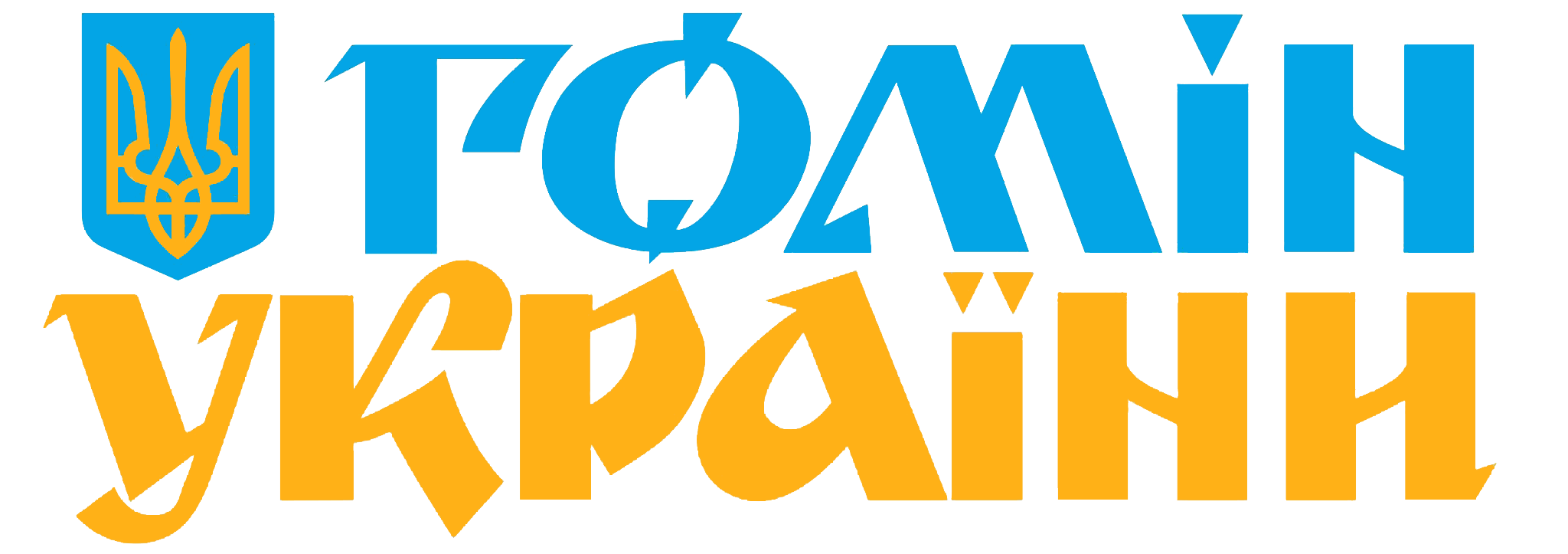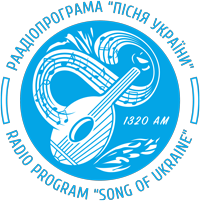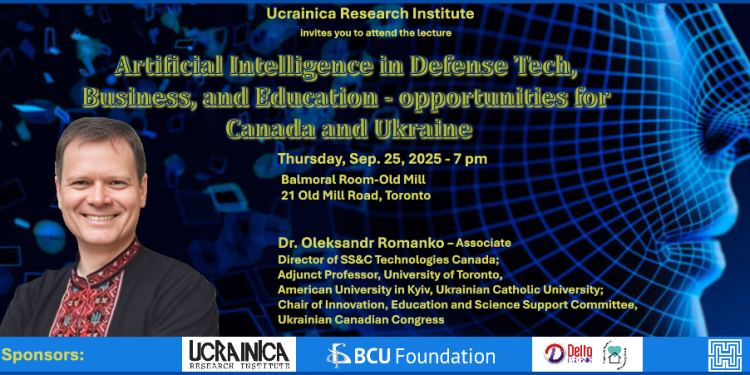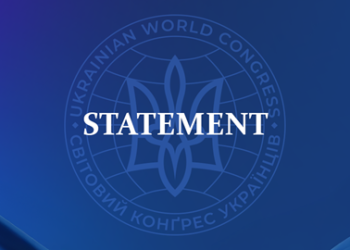On Thursday, September 25, 2025, the Ucrainica Research Institute hosted an event featuring Dr. Oleksandr Romanko, who presented on the topic of Artificial Intelligence in defence technology, business, and education — opportunities for Canada and Ukraine. The lecture combined historical context, real-world Ukrainian innovations, and a thought-provoking look at the operational and ethical risks as AI expands into the battlespace.
Dr. Romanko began by discussing the role of AI in education. He noted that assignments in schools and universities will need to be re-evaluated either to incorporate AI or to shift away from traditional essay formats, as it is becoming increasingly difficult to determine what is written by a human versus generated by AI. The reality, he argued, clearly favours inclusion rather than avoidance of AI in the educational process.
He then transitioned to AI in defence, placing it within the broader arc of military innovation beginning with Alan Turing, WWII war-games, and Monte Carlo simulations, all of which incorporated elements of machine learning. Romanko highlighted that early computational advances during the Turing era transformed military decision-making and are credited with accelerating the end of WWII by two years. These innovations improved not only codebreaking and operational planning, but also saved an estimated 40 million lives. He emphasized that Turing’s work holds relevant lessons today, particularly in military operations: commanders must decide which signals to act on and which to ignore. Responding to every message allows adversaries to learn and adapt — one of the reasons many successful strategies are kept secret and provide jobs for human intelligence.
AI in Practice: Education, Startups, and the Battlefield
Dr. Romanko provided several concrete examples of how AI is already being applied. First, he demonstrated how AI can support personalized education by generating tailored learning materials. He referenced Operation Spiderweb as an example, where, using Google’s NotebookLM, he was able to summarize a collection of long articles, videos, and podcasts into a five-minute presentation. This ability to accelerate skill acquisition — especially for soldiers and first responders — is crucial. However, he stressed that such AI outputs must be verified, as bias and missing context can lead to misleading conclusions.
Secondly, Romanko introduced Swarmer, a Ukrainian-founded startup developing software that enables unmanned vehicles to operate autonomously and in coordinated swarms. These swarms of drones can fly, identify targets, and conduct attacks with minimal human input. Romanko warned that while these technologies offer military advantages, they also pose serious escalation and control risks: once an autonomous attack is launched, it may be difficult — or even impossible — to stop.
He then spoke about Delta, a situational-awareness simulator and information-collection platform developed in Ukraine. Delta integrates drone positioning data, video feeds, and other sensor inputs to build a real-time battlefield picture. It can be layered with AI-driven war-game algorithms to support tactical decision-making and strategy development.
Romanko noted that we are already witnessing human-robot teaming, with small ground robots, FPV (first-person view) drones, and armed autonomous platforms now operating alongside soldiers. Examples included explosive-laden ground robots controlled by FPV pilots, and drones equipped with light machine guns.
Risks and Responsibilities
Dr. Romanko identified two major concerns. First is the issue of bias and transparency in AI-generated outputs. Since models can omit, distort, or prioritise certain types of information, human oversight is essential to ensure the accuracy and trustworthiness of results.
The second concern is the risk of proliferation. As major global powers invest heavily in similar AI capabilities, the pace of technological diffusion increases — raising the likelihood of both misuse and strategic instability.
Looking Ahead: Cooperation and Caution
The lecture offered both technical insight and real-world implications for policy and partnerships. Canada and Ukraine, Romanko noted, are well-positioned to collaborate on educational technologies, simulation systems, and humanitarian uses of AI. However, both countries must also prioritise investment in verification protocols, rules of engagement for autonomous systems, and safeguards against adversarial exploitation.
Looking forward, the challenge will be to strike the right balance between rapid technological adoption, rigorous oversight, and ethical responsibility.
A recording of the presentation, “Artificial Intelligence in Defence Technology, Business, and Education — Opportunities for Canada and Ukraine”, is available on ForumTV.
Nadia Lemko














